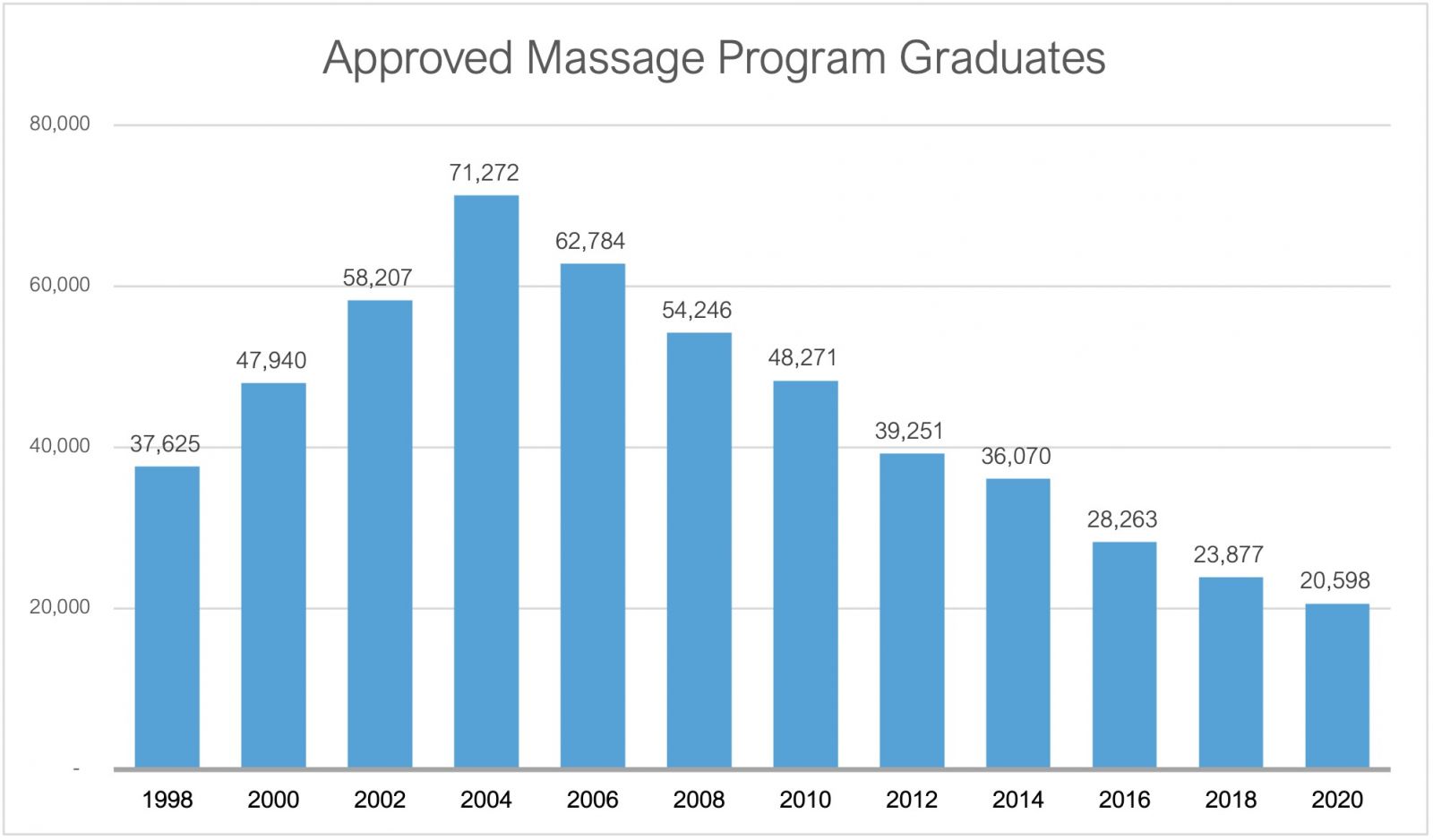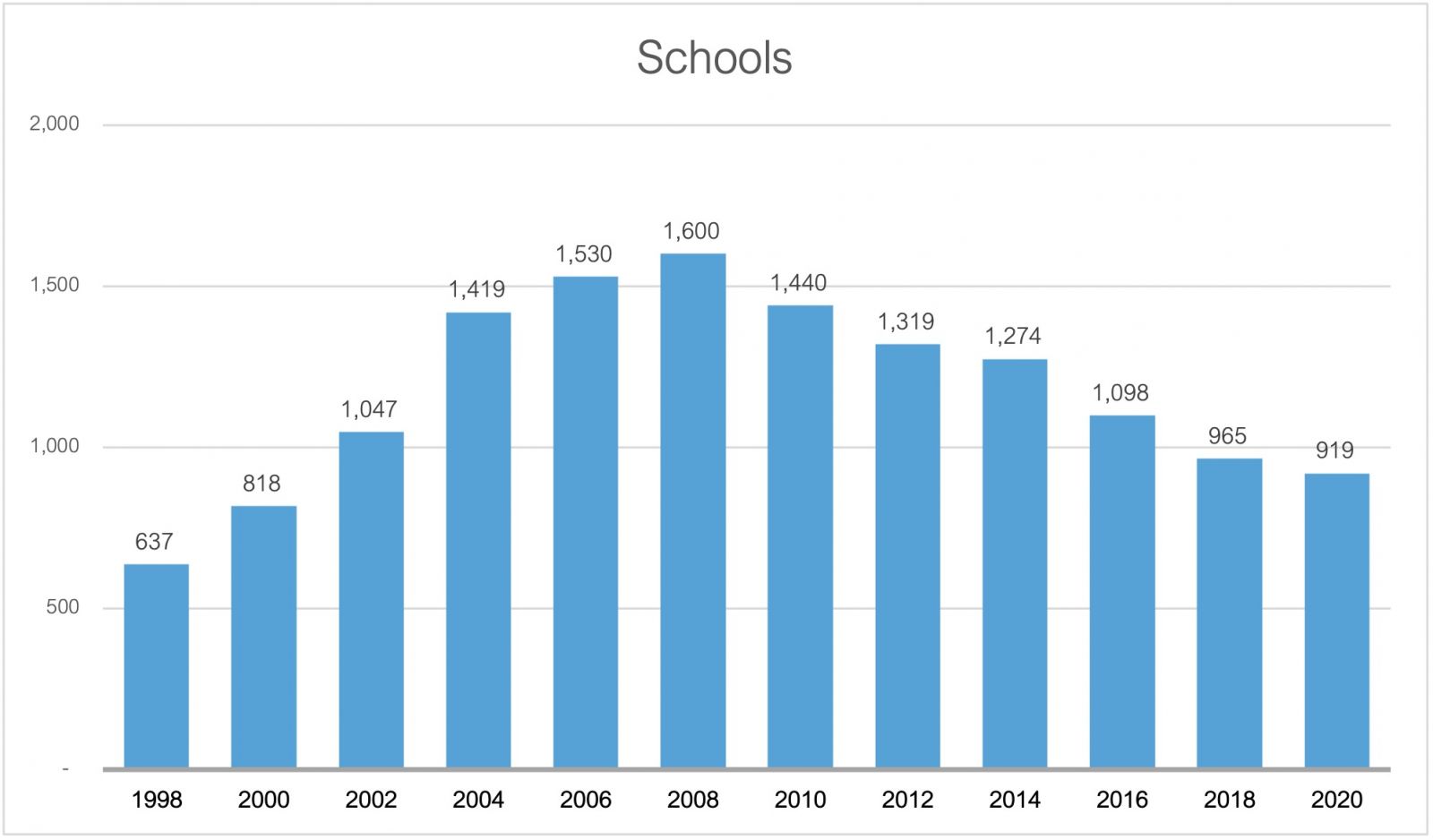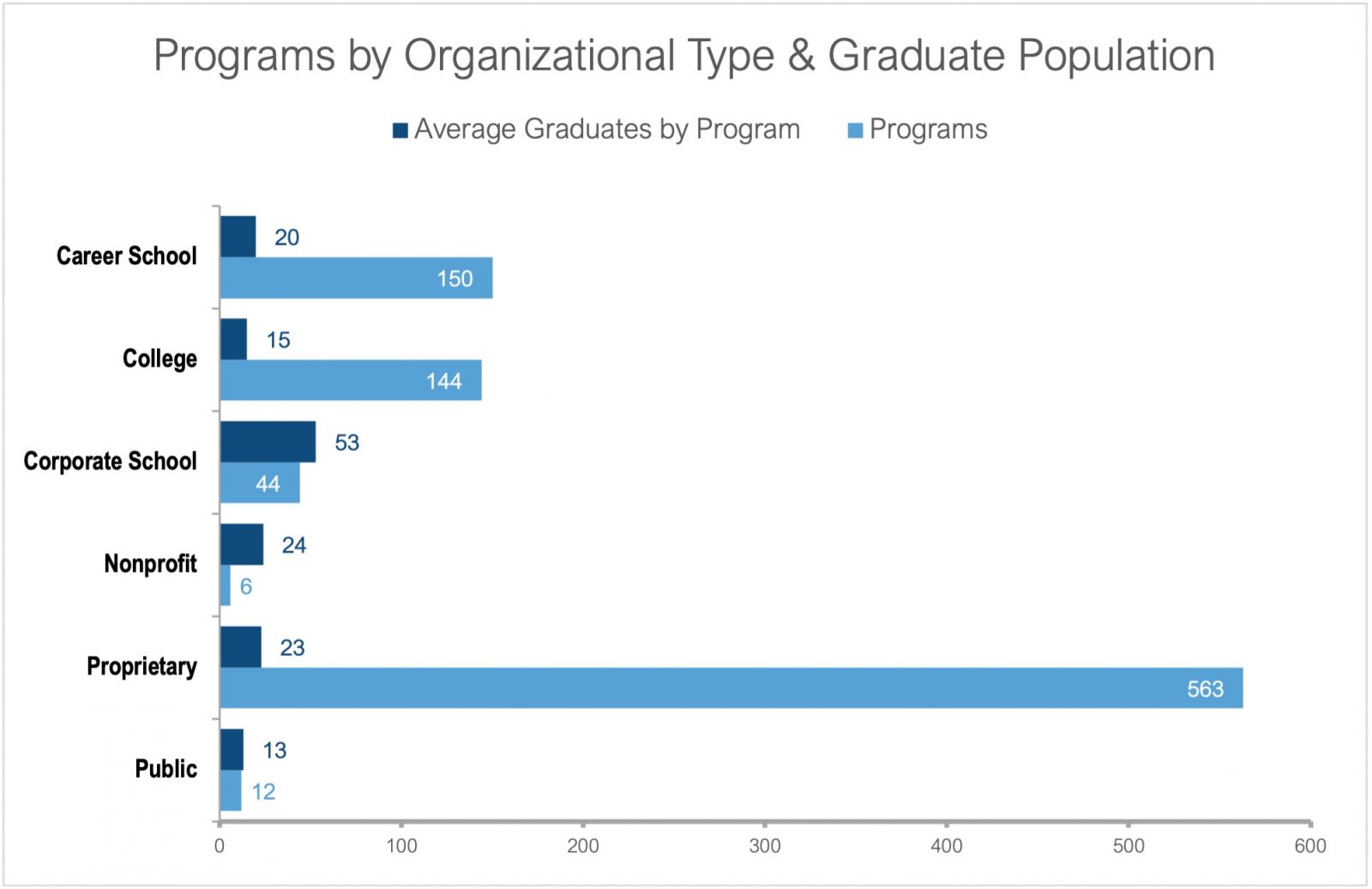.png)
Associated Bodywork & Massage Professionals (ABMP) conducts a census of all state-approved massage programs every two years, and recently completed its analysis of 2020 massage program results and trends.
It is an understatement to say that 2020 was a year like no other, and while that reality is reflected in the results we received, as well as the comments and stories we heard from schools, the results show that the majority of massage therapy schools showed impressive resilience in the midst of the hardships of the past year.
ABMP’s census was conducted January 2021–March 2021, during which time ABMP representatives attempted to contact 965 programs. Of that number, 70 percent of approved programs responded to the survey; nearly 50 programs had closed. Those who were reached (and still in operation) were asked, “How many students graduated from your primary massage program in 2020?” Using state and program data, we projected results for the segment of schools we did not receive an answer from.
According to the results of the survey, the number of massage therapy training programs in the United States, and the number of graduates from those programs, has declined from our 2018 survey. Combining survey data and projections, ABMP estimates there were 20,598 graduates from 919 programs in 2020, putting the average number of graduates per school at just over 22 students.
These are the lowest numbers we have seen since 2000, down from 23,877 graduates from 965 schools in our 2018 survey.
Given the environment for the country generally, and in-person education specifically, these numbers are a testament to the hard work, perseverance, and passion displayed by the owners, faculty, and students at these schools.


Types of Programs and Their Graduates
ABMP categorizes massage programs into six organizational types:
Career School—multiprogram institutions offering many career training programs in addition to massage therapy, typically medical and dental assisting, medical recordkeeping, etc.
College—massage program offered at a community, junior, or technical college.
Corporate School—massage therapy and spa programs as part of a multicampus, multistate, larger corporate entity.
Nonprofit—programs whose organization is incorporated as a nonprofit entity.
Proprietary—traditionally and typically “Mom & Pop” programs; single owner at a single campus.
Public—programs offered through the public education system/school district.
